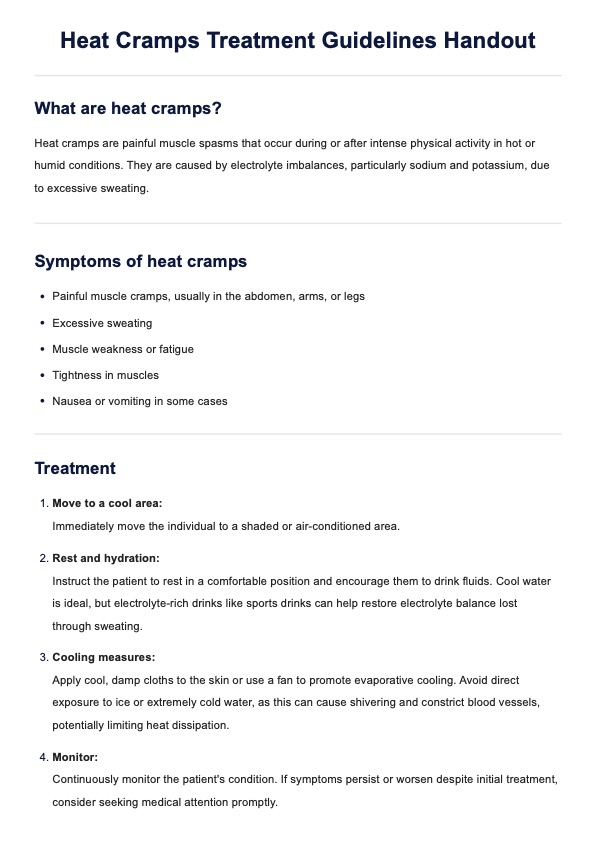Heat cramps typically subside within minutes to hours with appropriate treatment, including hydration and cooling measures.

Heat Cramps Treatment Guidelines Handout
Learn how to effectively treat heat cramps with this detailed handout. Download Carepatron's free PDF guide for comprehensive information and guidance.
Use Template
Heat Cramps Treatment Guidelines Handout Template
Commonly asked questions
The first step is to move the patient to a cool, shaded area and have them rest. Encourage them to drink cool water or electrolyte drinks to replenish fluids and electrolytes.
Heat cramps are primarily caused by electrolyte imbalances, particularly sodium and potassium, due to excessive sweating during physical exertion in hot or humid conditions.
EHR and practice management software
Get started for free
*No credit card required
Free
$0/usd
Unlimited clients
Telehealth
1GB of storage
Client portal text
Automated billing and online payments











